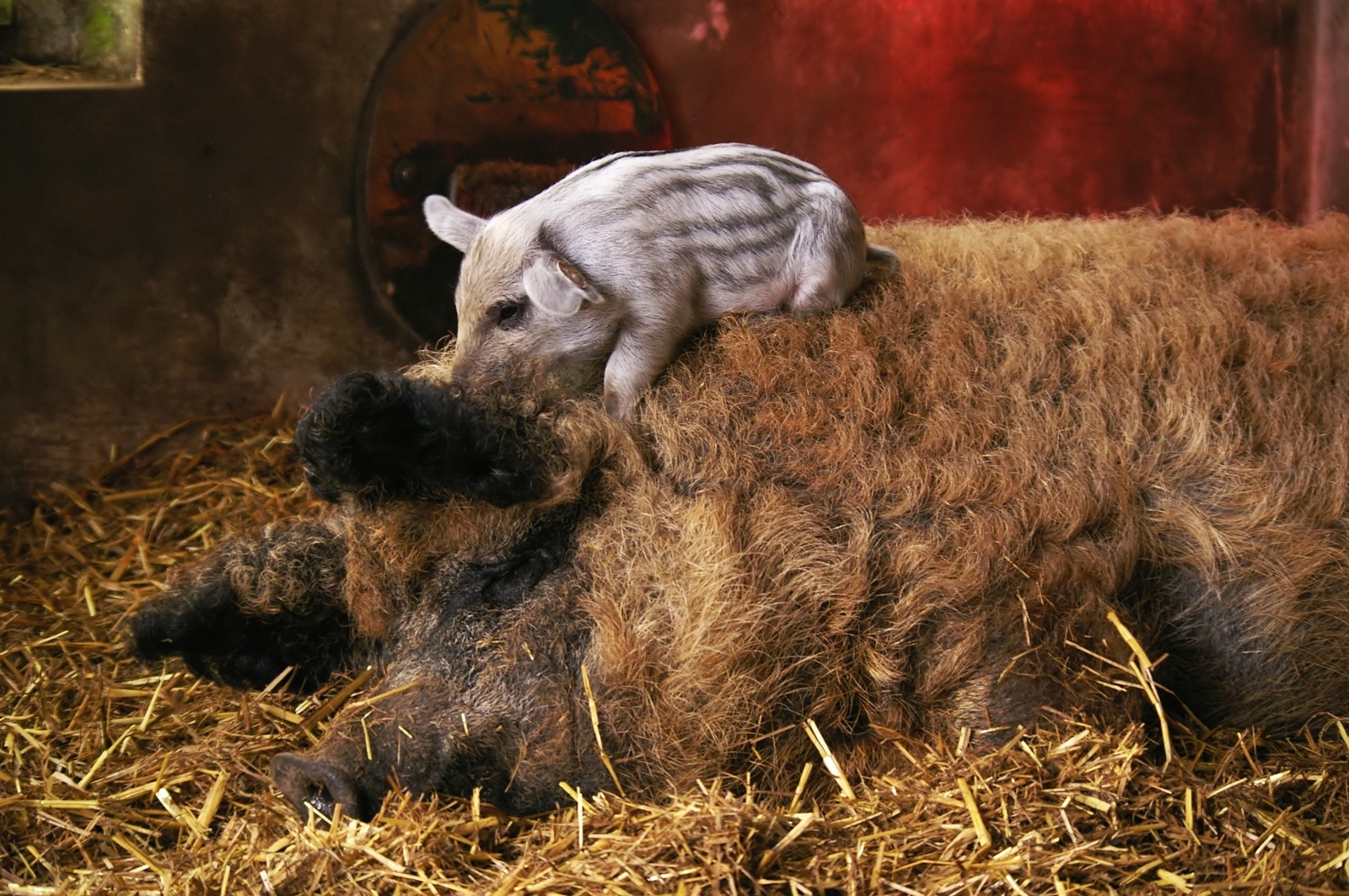Originally reared by Hungarian farmers in the 1830s by crossing two species of domestic pigs with the European wild boar and a Serbian hog breed, Mangalica soon became quite popular nationwide for its succulently marbled meat, its speedy growth, and the fact that it does not require much care; with their thick coat of curly fur, Mangalicas can easily withstand cold temperatures and will raise their young in outdoor pens year-round. Over the following decades, three types of Mangalica were bred – the blonde, red, and swallow-bellied varieties, although all of them are born striped like wild boars – and since these pigs have an extremely high lard-producing capacity, they comprised about 90% of the country’s swine citizenship by the 1930s.
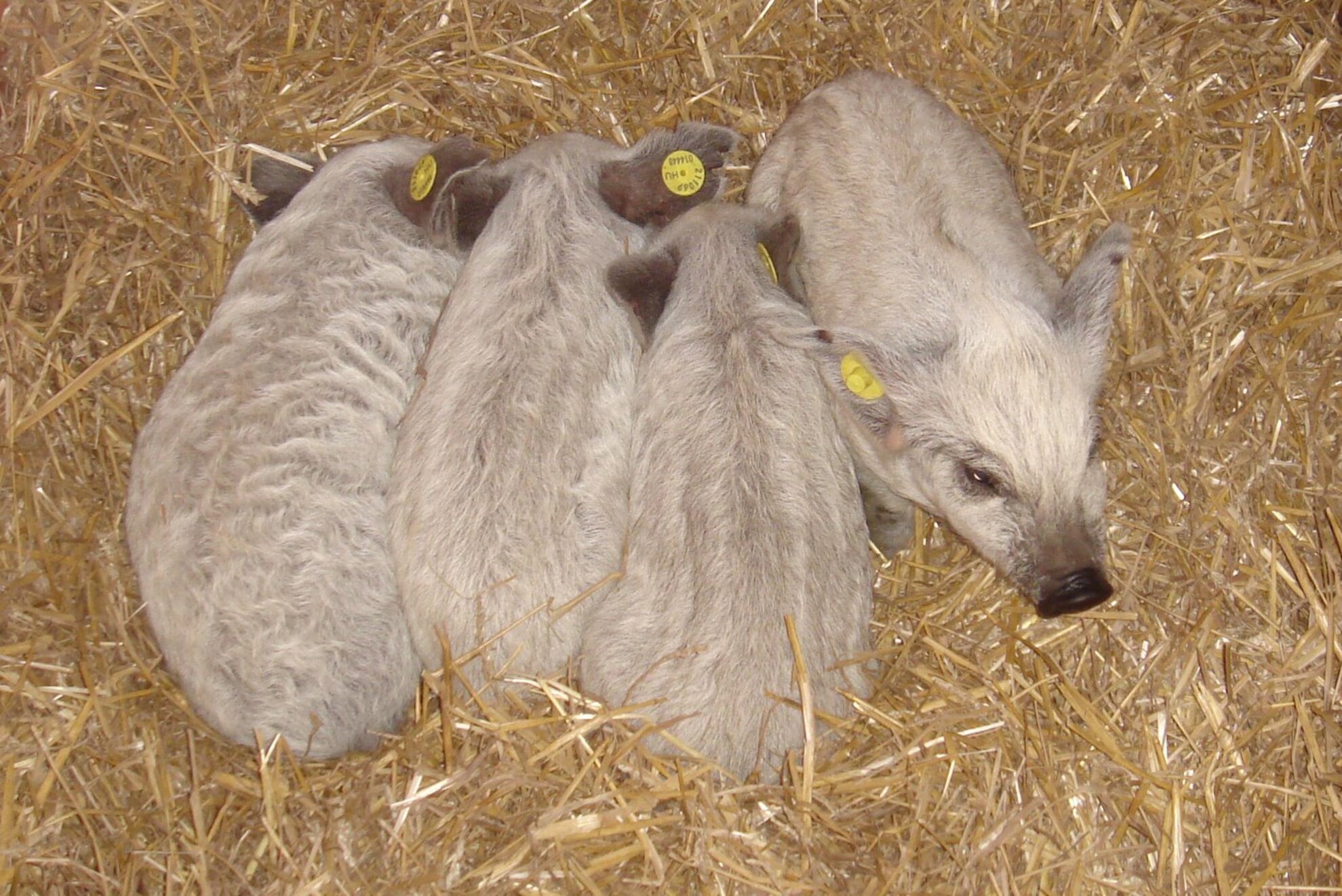
However, with the rise of communism in Hungary after World War II, farmers were forced to produce their output with a focus on mass production instead of high-quality flavor, and because Mangalicas are a medium-sized species, the populace steadily dwindled in favor of bigger breeds that could more effectively feed the masses. As a result, by the early 1990s only about 200 Mangalica pigs still existed on just a handful of Hungarian farms.
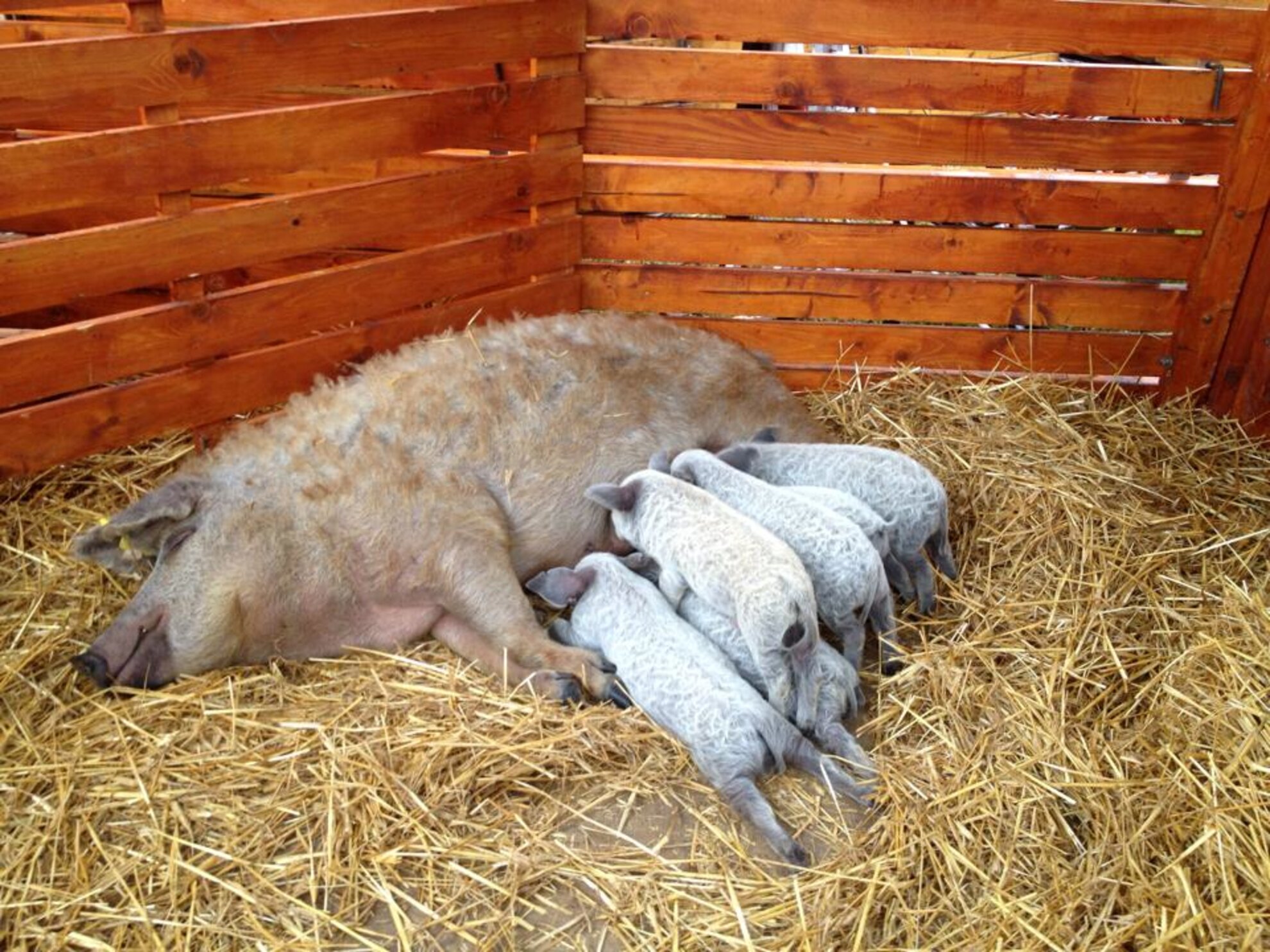
Fortunately, under the leadership of Magyar animal geneticist Péter Tóth (now president of the Mangalica Breeders Association), a nationwide endeavor aimed to bring back the Mangalica porkers by purchasing the last of them directly from the slaughterhouses, before diligently encouraging their rapid reproduction nationwide. After years of painstaking husbandry efforts, more than 50,000 Mangalicas were born and raised by this point, saving the adorably hairy swine from the brink of oblivion.
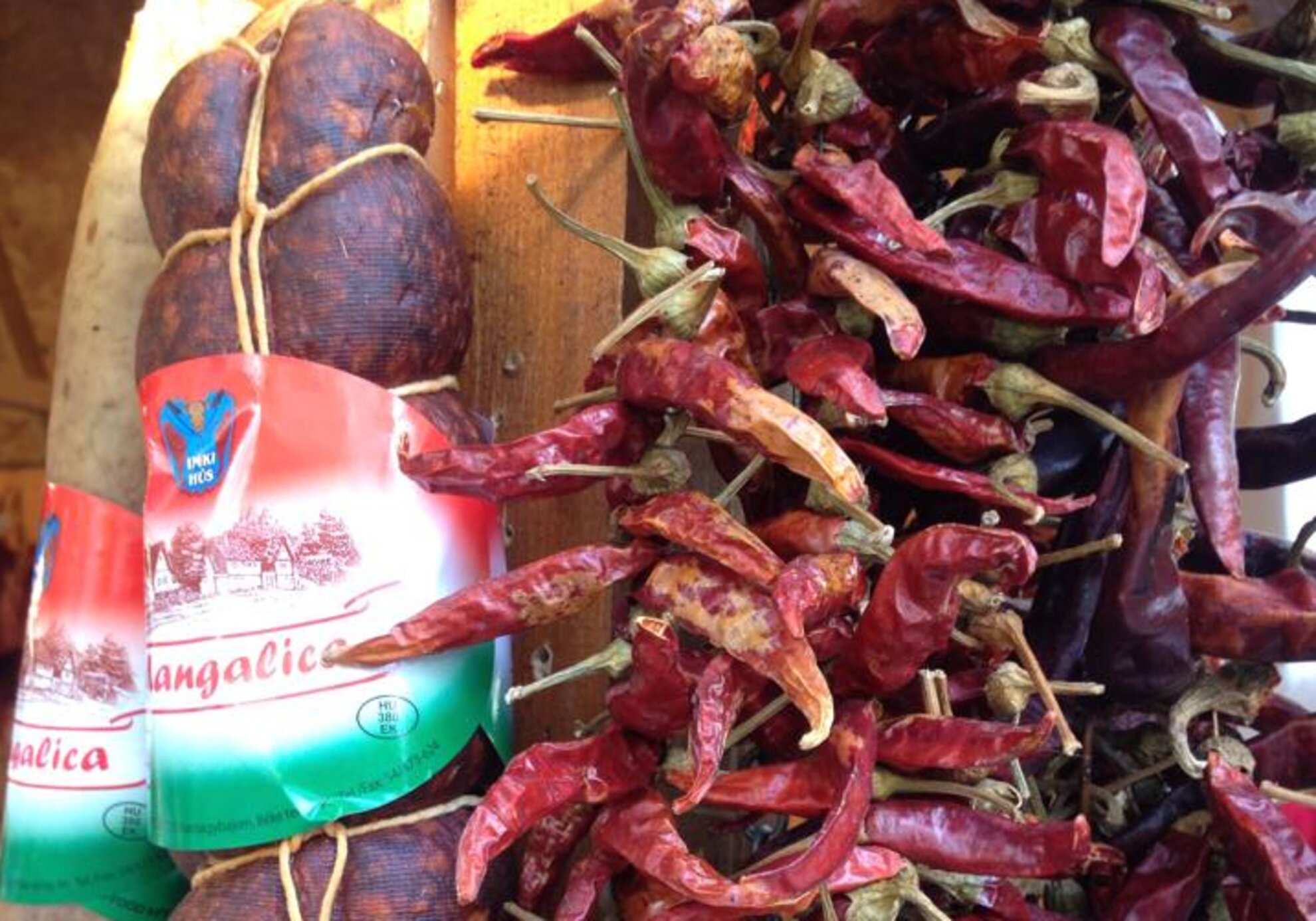
Now raised on numerous farms nationwide, Mangalica pigs are increasingly popular not only in Hungary, but among pork aficionados everywhere – Mangalica sausages often cost three times more than ordinary links, while Mangalica cutlets are often called “Kobe pork” in the United States and Japan in comparison with top-caliber Kobe beef, and are prepared as a prized ingredient in international Michelin-starred restaurants. Nonetheless, Mangalica meat is still predominantly found here in Hungary, and local chefs take pride in serving this savory specialty at restaurants across Budapest.
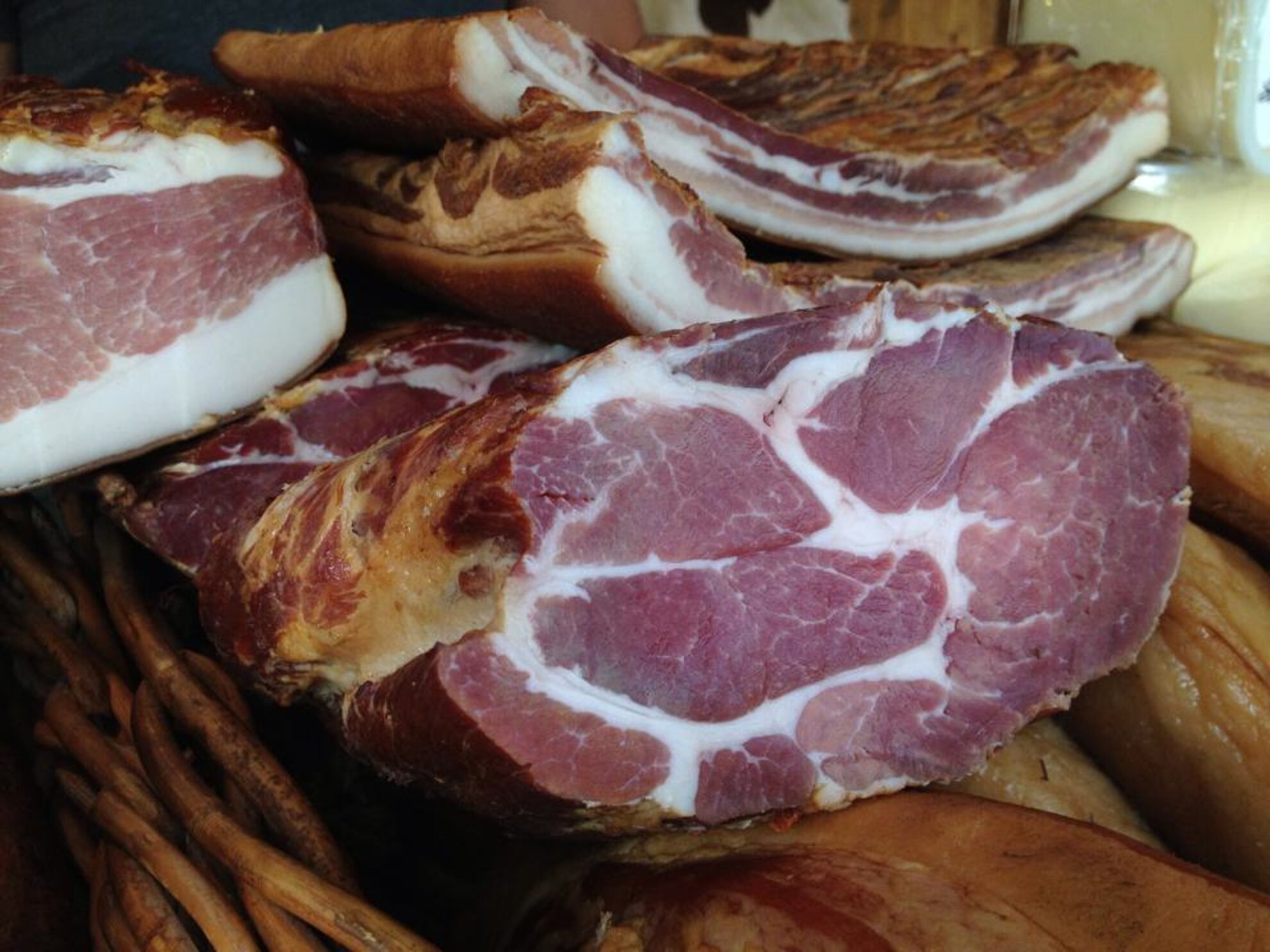
The taste of Mangalica pork is noticably bolder than most porcine products, while remaining lusciously tender and juicy – although paprika-flavored sausage is the most common Mangalica delicacy, smoked hams and fresh chops are also increasingly popular for good reason. Most Mangalica pigs are raised free-range and fed pasture plants along with potatoes and pumpkins, enhancing the meat’s rich flavor.
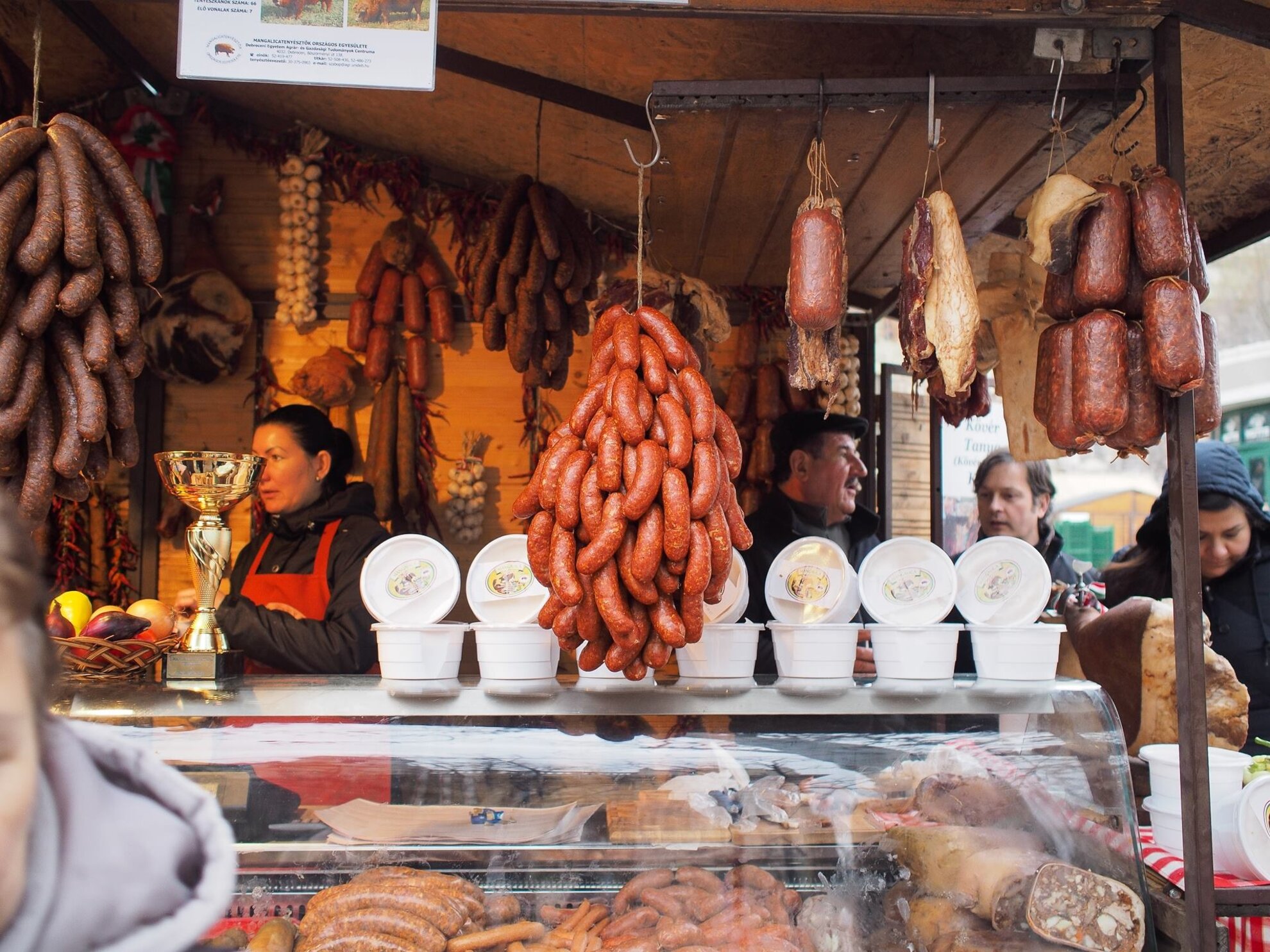
This weekend, everyone has the opportunity to see these fuzzy piggies live in the heart of Hungary’s capital – as well as to try their diverse pork specialties – at the annual open-air Budapest Mangalica Festival happening February 6-8 in Szabadság Square. Here Mangalica producers proffer their fine swine-based treats fresh from the farm, all alongside varied entertainment programs and other Hungarian delicacies. Festival entry is free of charge – check out the official festival website for more details.
